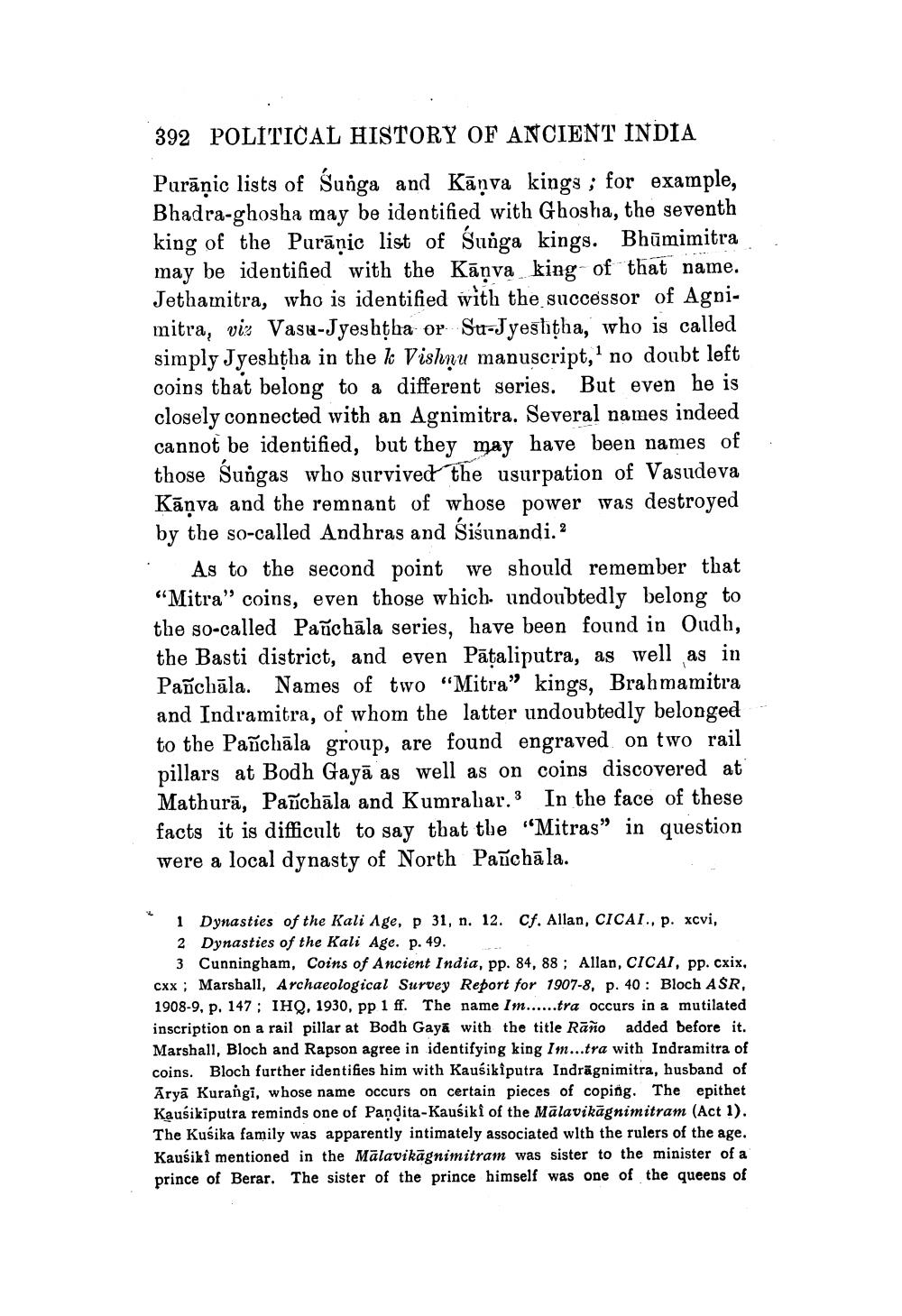________________
392 POLITICAL HISTORY OF ANCIENT INDIA
Purāņic lists of Sunga and Kāņva kings ; for example, Bhadra-ghosha may be identified with Ghosha, the seventh king of the Purāņic list of Sunga kings. Bhūmimitra may be identified with the Kāņva king of that name. Jethamitra, who is identified with the successor of Agnimitra, viz Vasu-Jyeshţha op Su-Jyeslitha, who is called simply Jyeshtha in the k Vishnu manuscript,' no doubt left coins that belong to a different series. But even he is closely connected with an Agnimitra. Several names indeed cannot be identified, but they may have been names of those Sungas who survived the usurpation of Vasudeva Kāņva and the remnant of whose power was destroyed by the so-called Andhras and Siśunandi. 2 • As to the second point we should remember that “Mitra” coins, even those which undoubtedly belong to the so-called Pañchāla series, have been found in Oudh, the Basti district, and even Pāķaliputra, as well as in Pañchāla. Names of two "Mitra" kings, Brahmamitra and Indramitra, of whom the latter undoubtedly belonged to the Pañchāla group, are found engraved on two rail pillars at Bodh Gayā as well as on coins discovered at Mathurā, Pañchāla and Kumralar. 3 In the face of these facts it is difficult to say that the “Mitras” in question were a local dynasty of North Pañchāla.
1 Dynasties of the Kali Age, p 31, n. 12. Cf. Allan, CICAL., p. xcvi, 2 Dynasties of the Kali Age. p. 49.
3 Cunningham, Coins of Ancient India, pp. 84, 88 ; Allan, CICAI, pp.cxix, cxx ; Marshall, Archaeological Survey Report for 1907-8, p. 40: Bloch ASR, 1908-9, p. 147 : IHQ, 1930, pp 1 ff. The name Im......tra occurs in a mutilated inscription on a rail pillar at Bodh Gayā with the title Raño added before it. Marshall, Bloch and Rapson agree in identifying king Im...tra with Indramitra of coins. Bloch further identifies him with Kausikiputra Indrāgnimitra, husband of Āryā Kurangi, whose name occurs on certain pieces of coping. The epithet Kausikiputra reminds one of Pandita-Kauśiki of the Malavikāgnimitram (Act 1). The Kuśika family was apparently intimately associated with the rulers of the age. Kauśiki mentioned in the Malavikāgnimitram was sister to the minister of a prince of Berar. The sister of the prince himself was one of the queens of




